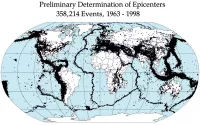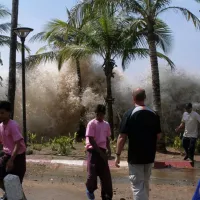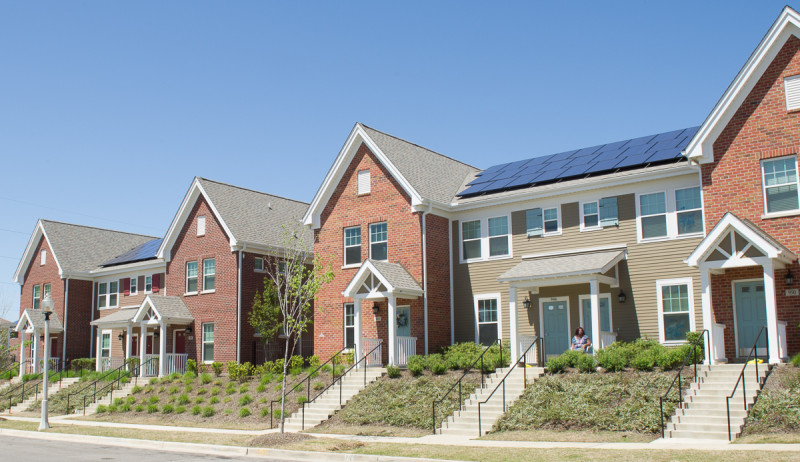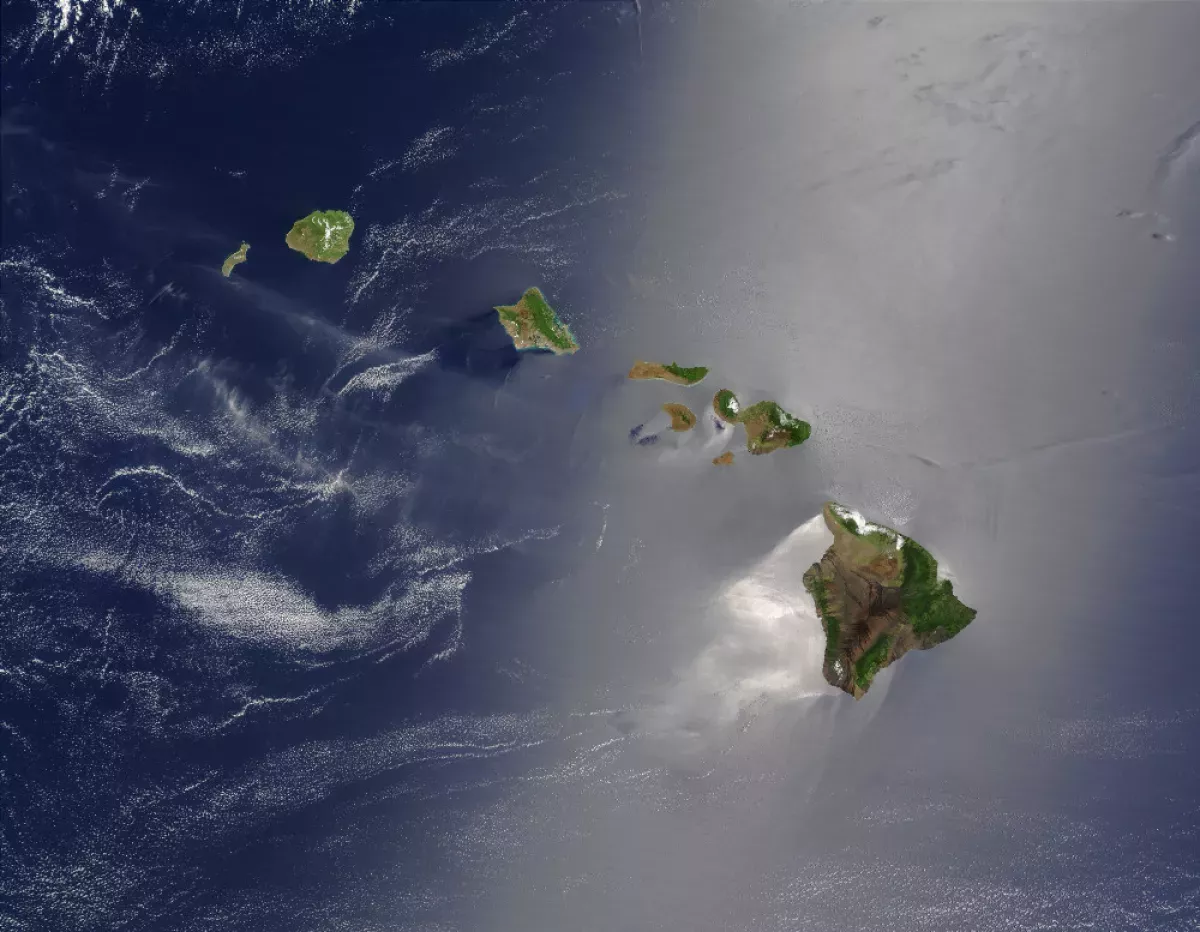The Hawaiian Islands, formerly known as the Sandwich Islands, are an archipelago spanning over 1,500 miles in the North Pacific Ocean. They consist of eight major volcanic islands, atolls, and smaller islets. The archipelago derives its name from its largest island, Hawaiʻi.
1900: First U.S. Census in Hawaii
In 1900, the first census conducted by the United States recorded the Native Hawaiian population at 37,656. This census marked the continuing decline of the Native Hawaiian population since pre-1778 times.
1959: Hawaii Becomes a State
In 1959, Hawaii was admitted as the 50th state of the United States. This followed the period when the Republic of Hawaii governed after the illegal deposition of Queen Liliʻuokalani in 1893 and subsequent annexation by the United States in 1898.
1974: Earthquake Statistics Start
From 1974 to 2003, Hawaii accounted for 7.3% of the United States' reported earthquakes with a magnitude of 3.5 or greater, totaling 1533 earthquakes. During this period, Hawaii ranked as the state with the third most earthquakes.
1983: Start of Kīlauea Eruption
In 1983, Kīlauea on the southeastern island of Hawaiʻi began a nearly continuous eruption that lasted until August 2018. This eruption was a significant period of volcanic activity for the island.
2003: Earthquake Statistics End
By 2003, Hawaii had accounted for 7.3% of the United States' reported earthquakes with a magnitude of 3.5 or greater from 1974 to 2003, totaling 1533 earthquakes. During this period, Hawaii ranked as the state with the third most earthquakes.
June 15, 2006: Creation of Papahānaumokuākea Marine National Monument
On June 15, 2006, President George W. Bush created Papahānaumokuākea Marine National Monument. The Monument covers the northwestern Hawaiian Islands and surrounding waters, forming the world's largest marine wildlife reserve.
October 15, 2006: 2006 Hawaii Earthquake
On October 15, 2006, a 6.7 magnitude earthquake struck off the northwest coast of the island of Hawaii near the Kona area. It was followed by a 5.7 magnitude aftershock. The earthquake caused minor to moderate damage, road closures due to rock slides, and power outages. Effects were felt as far as Honolulu, Oahu. No deaths or life-threatening injuries were reported.
2009: Endangered Species in Hawaii
As of 2009, many remaining endemic species in Hawaii were considered endangered. The arrival of Europeans had a significant impact, leading to widespread deforestation and an increase in the number of extinct species due to large-scale agriculture and livestock grazing.
February 27, 2010: 2010 Chile Tsunami
A tsunami resulting from an earthquake in Chile hit the Hawaiian Islands on February 27, 2010. Although it was relatively minor, local emergency management officials ordered evacuations and treated it as a 'good drill' for future major events.
August 2010: World Heritage Status for Papahānaumokuākea
In August 2010, UNESCO's World Heritage Committee added Papahānaumokuākea Marine National Monument to its list of World Heritage Sites. This recognition highlighted the global importance of the region's marine biodiversity.
March 11, 2011: 2011 Japan Tsunami
On March 11, 2011, a tsunami resulting from an earthquake in Japan hit the Hawaiian Islands. It caused about $30.1 million in damages, and local officials ordered evacuations in preparation for a possible major event.
August 26, 2016: Expansion of Papahānaumokuākea
On August 26, 2016, former President Barack Obama expanded Papahānaumokuākea Marine National Monument, quadrupling its original size. This expansion further protected the rich marine biodiversity of the region.
May 4, 2018: Kīlauea Earthquake
On May 4, 2018, a 6.9 magnitude earthquake occurred in the zone of volcanic activity from Kīlauea. This event was part of the ongoing volcanic activity on the island of Hawaiʻi.
August 2018: Kīlauea Eruption Halts
Kīlauea had been erupting nearly continuously since 1983 when it stopped in August 2018. This marked the end of a significant volcanic event on the southeastern island of Hawaiʻi.
2020: Native Hawaiian Population in 2020
By 2020, the Native Hawaiian population in Hawaii increased to 680,442, including people of mixed heritage. This was a significant rise from the 37,656 recorded in the 1900 census.
Mentioned in this timeline

George W Bush the rd U S President - is...

Barack Obama the th U S President - was the...
Japan is an East Asian island country situated in the...

An earthquake is the shaking of the Earth's surface caused...

A tsunami is a series of powerful waves caused by...
Hawaii is a U S state located in the Pacific...
Trending

21 minutes ago Housing Crisis: Americans Face Trade-off Between Affordability and Safety Amidst Rising Prices.

1 hour ago Margot Robbie defends 'Wuthering Heights' casting, calls Jacob Elordi perfect Heathcliff.
1 hour ago Joel Edgerton criticizes James Cameron's stance on Netflix films and the Oscars.

1 hour ago Gottlieb Throws Chair After Green Bay's Late Game Collapse Against Robert Morris

1 hour ago Putin Vows Donbas Seizure; Disagrees with US Ukraine War Proposal Points.
2 hours ago Spencer Knight expected to start; faces challenges, showcases skill with beautiful save.
Popular
Aftyn Alyssa Behn is an American politician currently serving as...
Matt and Ross Duffer known as the Duffer Brothers are...

Lane Kiffin is an American football coach currently serving as...

XXXTentacion born Jahseh Dwayne Ricardo Onfroy was a controversial yet...

William Franklin Graham III commonly known as Franklin Graham is...

Candace Owens is an American conservative political commentator and author...
